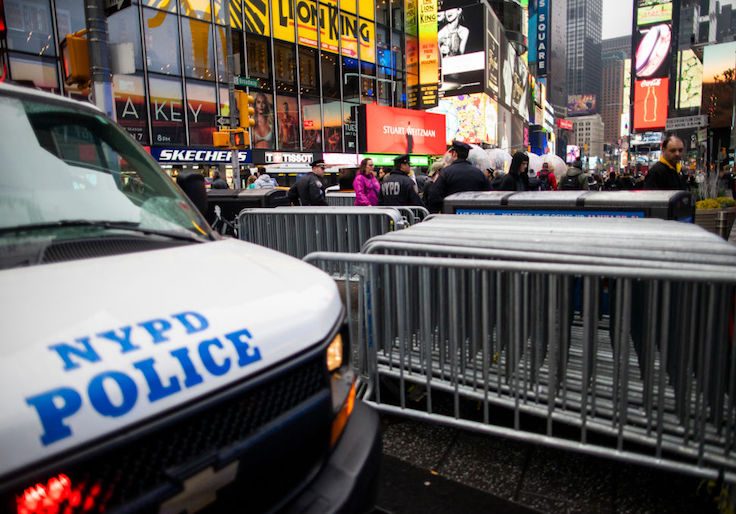To fix their rapidly collapsing bail reform law, New York state lawmakers need to hand some discretion back to judges, a Thursday report on the policy's trajectory argues.
On Jan. 1, New York became the latest state to largely do away with cash bail, prohibiting its use for all misdemeanors and many felony offenses. The results have not been encouraging. Crime rates have spiked in New York City and polling support for bail reform has more or less collapsed.
In the new report, Rafael Mangual, deputy director of legal policy at the conservative Manhattan Institute, argues that the state needs to do three things to get bail reform back on track: Allow judges to make algorithmically informed considerations of public safety in bail decisions, allow the revocation of release if someone is rearrested, and give more funding to state courts to process cases faster.
"The reforms in this paper may not satisfy all supporters or opponents of New York's bail reform," Mangual writes, "but they are offered as a potential compromise that will help mitigate at least some of the risks inherent in the laws governing pretrial release today."
First and foremost, Mangual writes, New York needs to permit judges to weigh an offender's risk to public safety when considering whether to release the offender before a trial. New York is, he notes, the only state that does not currently allow such calculations, requiring judges only to consider a person's probability of failing to appear at trial.
Specifically, Mangual calls for the use of an algorithmic Risk Assessment Tool of the sort used successfully in New Jersey's bail reform, which lets a judge calculate the risk of dangerousness using race-neutral factors about the offender and the offense. This, Mangual writes, "will provide judges with an objective framework to aid them in their pretrial release decisions."
Secondly, the report calls for allowing judges to revoke release if an offender is rearrested after release. This proposal responds to the fact that, since bail reform passed in New York, many criminals know that if apprehended, they will be released—as one fatal DWI offender told the police, "I'll be out tomorrow." That knowledge may have contributed to the post-reform increase in lawlessness.
"Because pretrial detention and the financial impact of having to post bail are the most immediate consequences associated with an arrest, and because bail reform rendered those consequences much less likely to result from an arrest, the cost associated with certain criminal activity may be perceived as lower by criminal actors, who, in turn, may now be less likely to be deterred by the prospect of an arrest," Mangual writes.
Lastly, Mangual argues that to offset concerns about increased detention, the state needs to allocate substantially more funds to the court system. Higher funding would allow cases to be resolved more quickly, keeping offenders detained before trial for less time.
Such reforms, although likely to curb the law's worst excesses, may face an uphill battle in the Democrat-controlled state legislature. Democratic lawmakers have floated a plan to grant judges greater discretion while abolishing cash bail altogether. However, it is unclear whether that discretion will include judgements about dangerousness and, state senate majority leader Andrea Stewart-Cousins (D.) said, "almost all misdemeanors and nonviolent felonies" would remain ineligible for pretrial detention.
Mangual's proposal follows months of turmoil for New York's bail reform efforts. The Empire State is one of several that have recently implemented such laws, with the goal of both reducing state jail populations and getting rid of money bail, which critics argue discriminates unfairly against poor offenders. The bill, signed in April by Gov. Andrew Cuomo (D.), categorically prohibits judges from holding an arrested offender on bail unless he or she has committed a violent felony, or one of a small handful of other offenses.
The expected effect is substantial—the left-leaning Vera Institute of Justice estimated that 90 percent of arrestees will be released, resulting in a 40 percent reduction in the state jail population. That, in turn, means more criminals on the street and more crime. NYPD statistics show a 17 percent bump in major crimes in January 2020 over the preceding January. It's hard to know how many of those were from released offenders, but the NYPD noted that 143 individuals released pretrial committed at least 230 crimes in January alone.
Rising crime has translated into collapsing public support for the reform. A Siena poll found that as of February, a majority of New Yorkers (59 percent) said bail reform was "bad for New York." At the time of the bill's signing, 55 percent said bail reform was "good for New York." Today, majorities of Republicans and Independents oppose the changes, while a bare plurality of 49 percent of Democrats are in favor, while even Cuomo is considering revamping the law.
